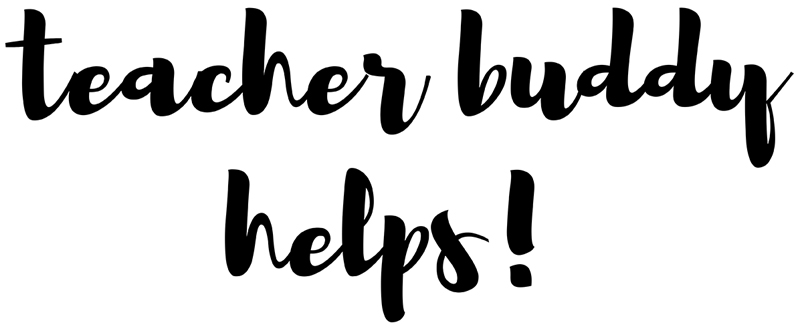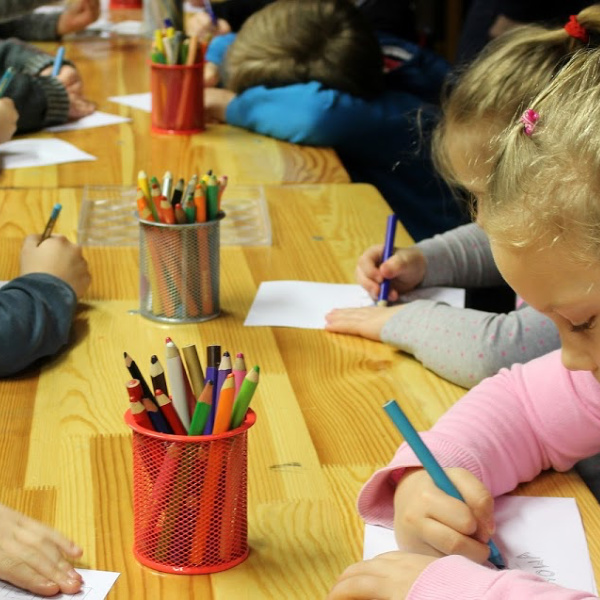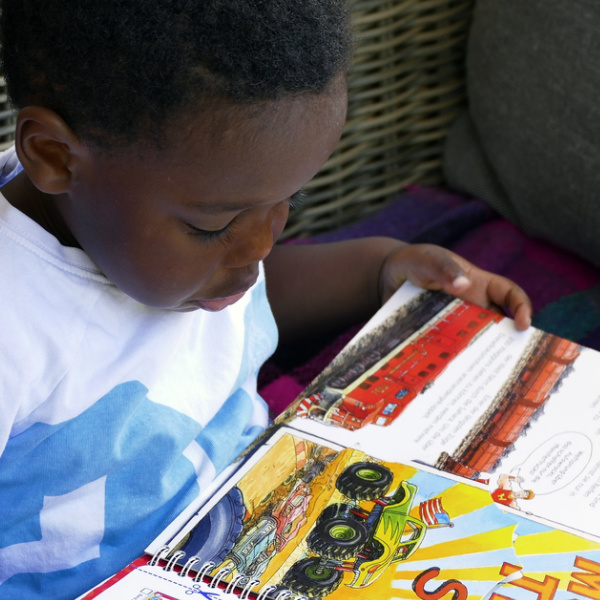How I Teach Writing in Elementary School
For me, teaching writing in elementary school was one of the most challenging subjects to teach. Although I was always a good student in English and Language Arts subjects as a child. I just couldn’t seem to get a handle on how to teach it correctly. Especially since all the students worked at such different paces.

My Experience Teaching Writing in Elementary School as a Young Teacher
But, teaching writing in elementary school is a whole other challenge. Just when I felt I had a handle on how to proceed, I changed grade levels. Then I had to re-think the subject again.
Unfortunately, there were not many “writing programs” available in those years. So teachers were left to “wing it” and create our own lessons.
I have to admit that since it was such a challenge to me I often placed it low in my planning. I guess I had the attitude that I would get to it later. AND, there are so many other language arts things to teach in primary that this just went on for a while.
How I finally discovered a working format
Thankfully, I was finally partnered with a teacher that had a wonderful process that made sense. It guided students along, taught skills that needed to be taught and allowed for individual student timeframes. This writing session was only 20-30 minutes per day – but it was every day of the week (mostly).
The components I will describe of this newly discovered (to me) writing format are; organization, instruction, time management, individual assistance, and grading.
Organization of the Writing Lesson
In order to be organized, I provided each student with a “Writing Folder.” This was just a two pocket folder. I listed their name and the title “Writing Folder” on the front.
In the left pocket was a grading rubric, and editing check sheet, some blank white paper. On the right side put some lined paper (about 5 sheets of each). Students will put their work inside the folder at the end of each writing period.
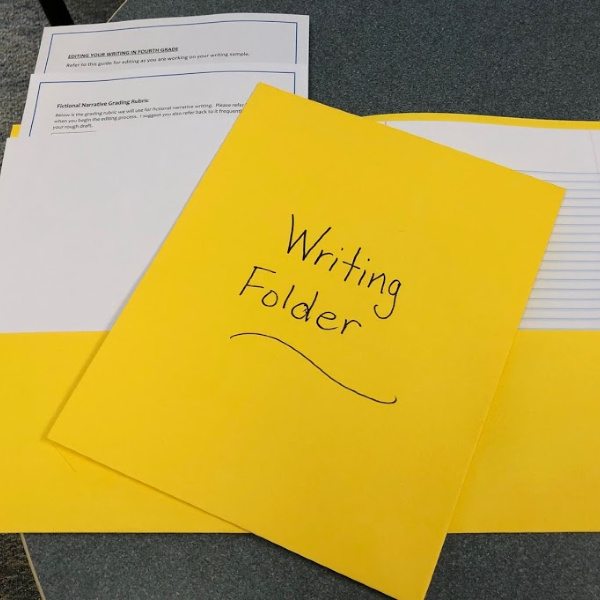
For instructional purposes, I needed chart paper, markers, the document camera, and different colored pens.
Instruction
Each writing genre went along with the theme in the language arts series. We would write a fictional narrative, a biography, an informative article, a friendly letter, etc. throughout the year. Sometimes circling back and repeating a type such as fictional narrative.
At the beginning of each of these types of writing, I would teach an introductory lesson on that type of writing. We discussed what the purpose is, why they need to learn to write this type of story or article, etc. I would also hand out the new grading rubric and explain it entirely.
I want to pause for a moment to offer you my FREE Classroom Routines Checklist. You can get it and download it right away by providing your email information here.
**
It’s Important to Model the Process
When teaching writing in elementary school it is extremely important to model for the students. For the next two to three days we would “write” a sample article together.
I would model the entire process; “guided writing”. Together we brainstormed the idea, then did the pre-writing, the rough draft, and editing.
While I was modeling the process, every student was copying what I was doing on their own paper. From the mapping (brainstorming) to the rough draft and editing.
When you are modeling writing the rough draft, illicit ideas from the students. Write it down exactly as the students says it. Make some errors on purpose (explaining it to the class that you’re doing it for editing). Then when it’s time to edit, you will use a different colored marker and make the corrections.
Speaking of modeling for your class, I wrote another article about how important it is for teachers to be the moral compass for their students. You can read it here.
Be a “Compass” for Your Students
Here is an example of a concept map for a second-grade informational essay on animals.
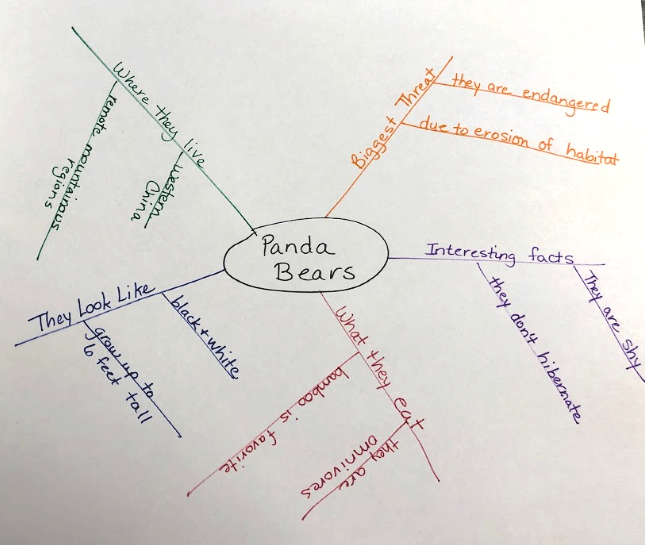
**
Keep the students engaged during modeling
Yes, this copying often slows down the modeling, but the students need to stay engaged while you are doing this. Don’t wait for every student to be done to move on. When about 2/3 are finished, move on to the next part of the process.
I would do each of these under the document camera and after school transfer this information to chart paper. The reason for this is so that I could display these samples when the students were asked to write their own.
If I was not finished at the end of the 20-30 minutes of “writing time,” we would end right there and come back to it the following day. This small habit allowed me the time I needed to thoroughly explain as I modeled.
On a side note, this was the part of “this writing instructional process” that was an “Ah-Ha” for me since I kept thinking I had to squeeze everything into an hour of instruction. If you are doing it well, you just can’t do it all in an hour.
AND, it also taught the students that writing was not a subject that happened quickly. That it takes many days and a lot of thinking and editing.
Their turn to plan their writing
Now it was their turn to write. At the beginning of instruction when it was “their turn” I would remind them that brainstorming is the first step. And I let then know that they should strive to have a subject decided on and some of the planning during this writing period.
This part is important because if you don’t state this, you will have about 2 to 3 students end the period with a blank piece of paper, saying, “I can’t think of anything to write about.”
As a reminder, the brainstorming or “concept mapping” is done on the blank paper. The main topic is in the center circle and sub-topics branch out from there. Details are added to each branch afterward.
The Rough Draft
When students begin their rough draft, they are using their concept maps as a guide. Each branch will become its own paragraph.
Before they are allowed to begin their rough draft, they must show their concept map to me for approval. This way I can make sure they have enough branches, and offer suggestions if they are stuck. I note on the top right corner that I have checked it with a checkmark and my initials.
When the student feels his rough draft is ready to be re-written, he must do four things first.
- Edit the rough draft using the Editing Guide provided in their folders.
- Read it ALOUD to himself.
- Ask two other students to read it for editing purposes.
- Bring it to me to review.
I make sure that these four steps are posted somewhere in the classroom and I remind them of this each day at the beginning of the writing period.
Now to explain the four steps above. Of course, students must edit their own papers, this is a given. After the editing, they must read it aloud to themselves.
I would usually have them go stand in a corner of the room so as not to disturb the other students who are writing. When you read something aloud, you catch any missing words like the, and, to, etc. Also, you catch sentences that sound funny.
Asking two students to read it allows them to read each others work (which often gives them ideas on how to extend their own stories) and they often provide suggestions to each other.
The final step, where they show it to me, is so that I can catch the final errors and put my initials at the top of the page indicating that I’ve checked it over.
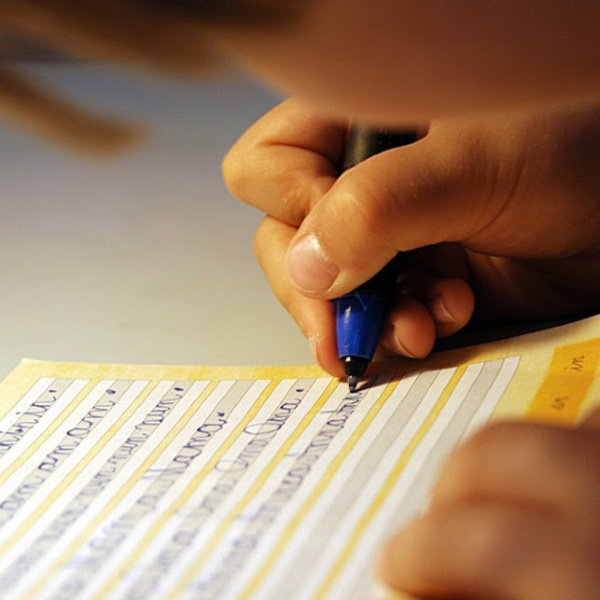
The final draft
After the rough draft has had all the reviewers, the student then “publishes” his story. During the beginning of the year’s instruction, we discuss what a paper should look like when you “publish” it. We discuss neat penmanship, adding margins, how to write the title, etc.
Now, I realize that nowadays many students publish their writing by typing it on the computer. I would make sure that they have at least one paper a year that you require them to write
Also, these handwritten ones look so nice on the bulletin board with their illustration above it.
Another negative aspect of typing it on the computer is that the computer program corrects their spelling and sometimes their grammar for them. This, then, takes away the learning process of editing.
When the final copy is complete, the student staples the entire process pages together with the final copy on the top. So, you place the content map on the bottom, the rough draft in the middle and the final copy on top.
Depending on the grade level, I might also ask them to create an illustration to go with their story. All this is getting it ready to display on the bulletin board.
Working at their own pace
In the teacher’s plan book, you will have an estimate on the length of time (how many days) needed to get the final essay from each student. It may be a week or two weeks.
During this time, your students will be working at different paces. The beauty of this system is that once a student has completed his final copy, if there are still a few days left, you have him begin writing another essay similar to the first but with a different twist.
So, if you are writing about animals, he chooses another animal and works on the concept map for that essay, then onto the rough draft, etc.
By using this method of organizing your writing period, you never have a student saying “I’m finished” while you wonder what to have them do next. THEY ARE ALL WRITING ALL THE TIME!
You will end up with about a fourth of your students with only one writing essay, others with two or three during this one to two week time frame.
One year I had a gifted little girl who loved to write. During the fictional narrative session, she wrote about seven essays.
I can pretty much guarantee you that you will have one or two students who aren’t near to being finished with the published paper when you want to move on to another genre.
The way I took care of this was to warn the student about three days before that he/she will have to stay in at recess to write if they don’t get to work. It’s amazing how quickly they are able to crank it out when you threaten their recess time. (wink)
A Note about grading
I would not recommend that you grade on how many essays the student was able to write during the period. You would definitely prefer a well written paper that took a student some time over three or four quickly written, unimaginative essays.
I would suggest that each paper receive two grades. One on the process of the type of genre, including the paragraph structure, etc. And the second grade for the genre is on creativity and originality.
In the younger grades, you will get a number of students who copy your modeled sample with a little twist to make theirs different. I wouldn’t discourage this (especially for your struggling writers) but try to convince them to make it more original as the year progresses.
Well, that is the entire process. Do you think this is something you might try to incorporate into your elementary classroom? Let me know how it works for you.
Until Next Time,
Your Teacher Buddy
